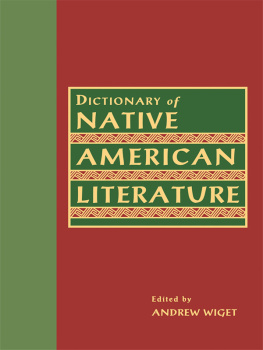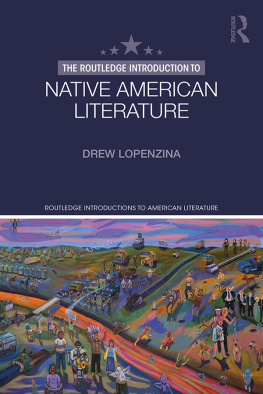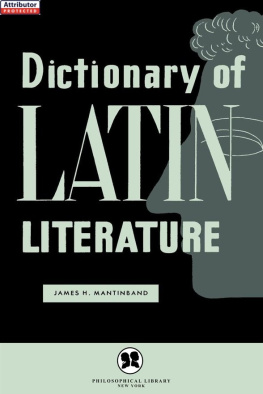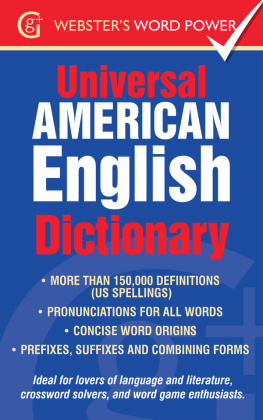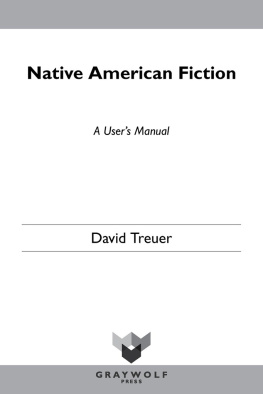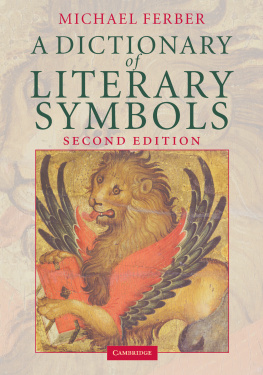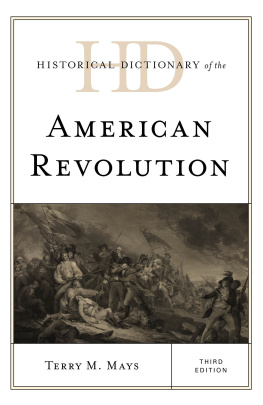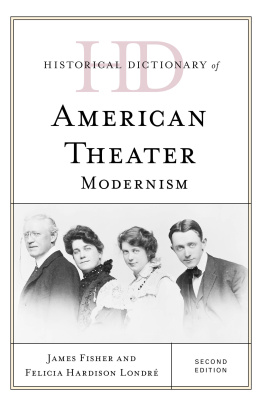ANDREW WIGET - Dictionary of Native American Literature
Here you can read online ANDREW WIGET - Dictionary of Native American Literature full text of the book (entire story) in english for free. Download pdf and epub, get meaning, cover and reviews about this ebook. year: 2011, publisher: Taylor & Francis (CAM), genre: Romance novel. Description of the work, (preface) as well as reviews are available. Best literature library LitArk.com created for fans of good reading and offers a wide selection of genres:
Romance novel
Science fiction
Adventure
Detective
Science
History
Home and family
Prose
Art
Politics
Computer
Non-fiction
Religion
Business
Children
Humor
Choose a favorite category and find really read worthwhile books. Enjoy immersion in the world of imagination, feel the emotions of the characters or learn something new for yourself, make an fascinating discovery.
- Book:Dictionary of Native American Literature
- Author:
- Publisher:Taylor & Francis (CAM)
- Genre:
- Year:2011
- Rating:5 / 5
- Favourites:Add to favourites
- Your mark:
- 100
- 1
- 2
- 3
- 4
- 5
Dictionary of Native American Literature: summary, description and annotation
We offer to read an annotation, description, summary or preface (depends on what the author of the book "Dictionary of Native American Literature" wrote himself). If you haven't found the necessary information about the book — write in the comments, we will try to find it.
Dictionary of Native American Literature — read online for free the complete book (whole text) full work
Below is the text of the book, divided by pages. System saving the place of the last page read, allows you to conveniently read the book "Dictionary of Native American Literature" online for free, without having to search again every time where you left off. Put a bookmark, and you can go to the page where you finished reading at any time.
Font size:
Interval:
Bookmark:

Garland Reference Library of the Humanities
(Vol. 1815)

This edition published in the Taylor & Francis e-Library, 2005.
To purchase your own copy of this or any of Taylor & Francis or Routledges collection of thousands of eBooks please go towww.eBookstore.tandf.co.uk.
Copyright 1994 by Andrew Wiget
All rights reserved
Library of Congress Cataloging-in-Publication Data
Dictionary of Native American literature/edited by Andrew Wiget.
p. cm.(Garland reference library of the humanities; vol. 1815)
Includes bibliographical references (p.) and index.
ISBN 0-203-30624-4 Master e-book ISBN
ISBN 0-8153-1560-0 (alk. paper)
1. Indian literatureUnited StatesEncyclopedias. 2. American literatureIndian authorsEncyclopedias. I.Wiget, Andrew.
II. Series.
PM155. D53 1994
897dc20 943811 CIP
. The Work as Focus of Forces
. Western Apache Narrative Genres
. Western Indian Reservations, 1890
. Indian Population by Counties and SMSAs, 1980
Following the award of the 1969 Pulitzer Prize for Fiction to N.Scott Momadays House Made of Dawn (1968), readers in all quarters began to give serious attention to Native American Literature. Precisely what that term denominated was heatedly argued by those who produced, taught, and read it. Many sought to embrace within the bounds of this term the vast corpus of Native American folklore generated by American anthropology. Some of them argued pragmatically that Momaday and writers of his stature could not be effectively understood without reference to the oral traditions which served as their artistic resource. Others, influenced by the redefinition of ethnography and folklore that was overtaking the ways in which those disciplines had been practiced in America, argued for a more expansive definition that would comprehend oral literature. Strangely, literature departments founded on the study of Homer and Chaucer foundered on the notion of oral literature when applied to Native American materials. Complicating this situation further was the fact that much of the most vigorous publishing activity was happening at small presses.
Some years later, these debates do not seem so strange. Today we understand how and accept that questions of evaluation are linked to models of interpretation. In ways that were not at the time so obvious in the case of African- American literature or even Chicano or Asian literature, Native American literature opened the difficult questions of tradition and influence, of the relationship between speech and writing, precisely at that moment in the evolution of literary criticism in the West when those topics were coming under the closest scrutiny. The argument over what was worth reading was clearly a transformation of the argument over how to read. While it was clear that contemporary Native American writers wanted to repudiate any kind of cultural determinism in the formation of their work, they were often driven, both by the needs of mass-market merchandising and by the presence of readers from their own communities of origin, to unambiguously address in their own persons that which had always been ambiguous: their own conflicted identities and the multiplicity of voices these generated. In this way, determinations of what counted as Native American literature often devolved into arguments over what and who were authentically Native American. Arguments over who speaks, and how, were endlessly debated in professional conferences, donut shops, classrooms, and, in not a few cases, on Indian reservations.
This volume emerged out of a sense that some basic frame of reference was needed for these always frustrating but often fruitful arguments. It was originally begun around 1980 by Jeffrey Huntsman at Indiana University. In 1987, it was passed on to the present editor, who formed an advisory board of individuals who had come to be regarded among the most respected scholars in different areas within the emerging field: for Native American oral literatures, Larry Evers (University of Arizona); for historical writing by Indians, A.LaVonne Brown Ruoff (University of IllinoisChicago) and Daniel F.Littlefield, Jr. (University of Arkansas-Little Rock); and for contemporary Indian writing, Joseph Bruchac (Greenfield Review). The task of researching and writing this volume was brought before the Association for the Study of American Indian Literatures, composed of the principal scholars and university teachers in the field, who embraced it, not without trepidation, as an urgent need. This is ultimately their work; fifty-two of them, including five non-American scholars, are represented in the more than seventy essays here. The present editor has permitted them to assume their own writing styles and to advance their own critical judgments. In such a new field, it is too early to canonize any critical interpretation, if that is ever advisable at all.
The advisory board and the Association scholars contributed significantly to the definition of the volume. The decision not to use a simple alphabetical listing of articles, for instance, but to organize the contents roughly by subject and period evolved from a shared concern to give some explicit shape to the field. These scholars also helped in identifying topics to be included (even up to these last few months) or excluded. So it was that after consultations, the decision was made not to include articles on film or journalism or childrens literature, which, however interesting in themselves, were also judged to be of enormous scope and would have taken the volume far afield. The fundamental question of whom to include also emerged from this group, though, given the length of the project from conception to publication, it is inevitable that, even with one major updating of the manuscript in 199192, the significance of some individuals has been underrepresented.
In terms of topical articles, the real issue was how to keep the volume focused on literature, oral and written. The decision to include some topical articles, on Indian policy, for instance, was based on the desire to provide teachers and the general reader with a concise in-text guide to background material essential for framing any reading of historical or contemporary Native writing. The same goal motivated the inclusion of the few maps and charts supplied. Serious secondary reading on history and ethnography should begin with the new Handbook of North American Indians (ed. Sturtevant et al.).
On the other hand, some topics that would have been especially interesting in conjunction with the study of Native oral literatures were not included. While it would seem logical to have a general article on Songs, for instance, it was clear from the beginning that Native American songs from over 350 different tribes did not have as a subject the same kind of formal coherence that oral narrative did, and that such an article, while an interesting and valuable exercise, would be not only spotty in its coverage but also fragmented into a multiplicity of subtopics, each of which would be important but impossible to explicate fully. The same may be said for an article on what has come to be popularly called Ritual Drama, a term that in some circles has almost become synonymous with ceremony or ritual. Unfortunately, the term itself is loaded with Western notions of representation and function that cannot be assumed to apply to Native peoples. And, like song, the topic quickly devolves into a discussion of multiple components (masking, dance, oratory, songs, prayers, processions, shrines, altars, etc.), the interrelationship of which is too complicated to be discussed briefly and too serious to be treated glibly. To have included articles on song or ritual drama would have been to invite their authors to create the most speculative kind of typology with which to frame a brief and spotty discussion of an enormous topic. For discussions detailed enough to provide serious consideration of such complex topics, the reader is referred to the many specialized articles cited in the
Font size:
Interval:
Bookmark:
Similar books «Dictionary of Native American Literature»
Look at similar books to Dictionary of Native American Literature. We have selected literature similar in name and meaning in the hope of providing readers with more options to find new, interesting, not yet read works.
Discussion, reviews of the book Dictionary of Native American Literature and just readers' own opinions. Leave your comments, write what you think about the work, its meaning or the main characters. Specify what exactly you liked and what you didn't like, and why you think so.

